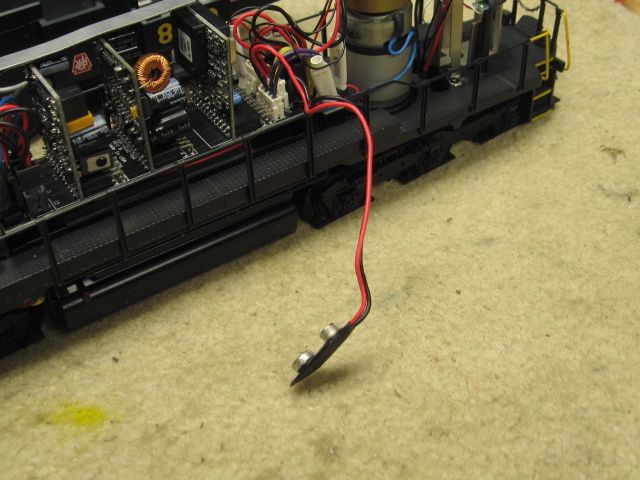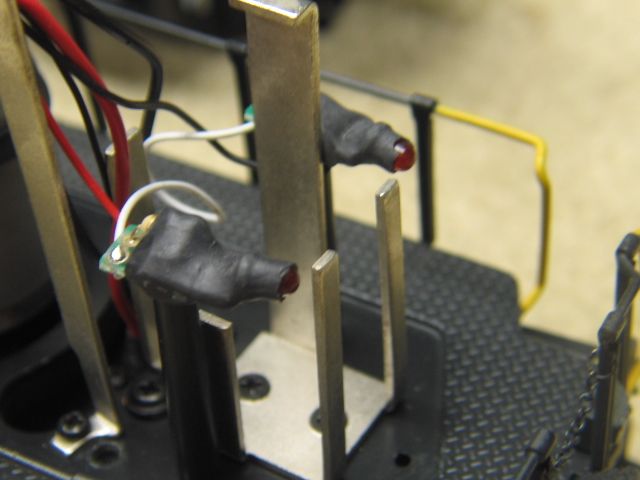Hey Gang,
Update: 7/8/15 - The Cruise Commander supplies 12V DC for lights.
Does anyone know what the voltage output is of the ERR Cruise Commander for lighting? I'll be calling ERR in the morning, but am hoping a night owl might be up who can answer. ![]() I'm replacing the marker lights that won't illuminate on the current coming from the Cruise Commander. My guess is that the current required to run the marker lights is too low. (The headlights work fine.)
I'm replacing the marker lights that won't illuminate on the current coming from the Cruise Commander. My guess is that the current required to run the marker lights is too low. (The headlights work fine.)
Backstory: I have an AtlasO SD35 that has been giving me fits for some time. It put on a nice light show with all the sparking. When it took the through route of a turnout, the middle wheelset of each truck arced to the middle rail of the diverging route. At slower speeds, it would short and turn off. I've swapped wheelsets and pickup rollers, and gave it a thorough cleaning and lube job, but the problem persisted. The other night, I decided that I would gut it and use it as a dummy. After removing the old board, I thought what the heck and threw in an ERR Cruise Commander I have for another project just to see what would happen. I connected only the power and motors and programmed it for 100 speed steps. I turned the throttle...and it crept around the layout on speed step 1!!! The light show is gone and it runs smooth as silk!






